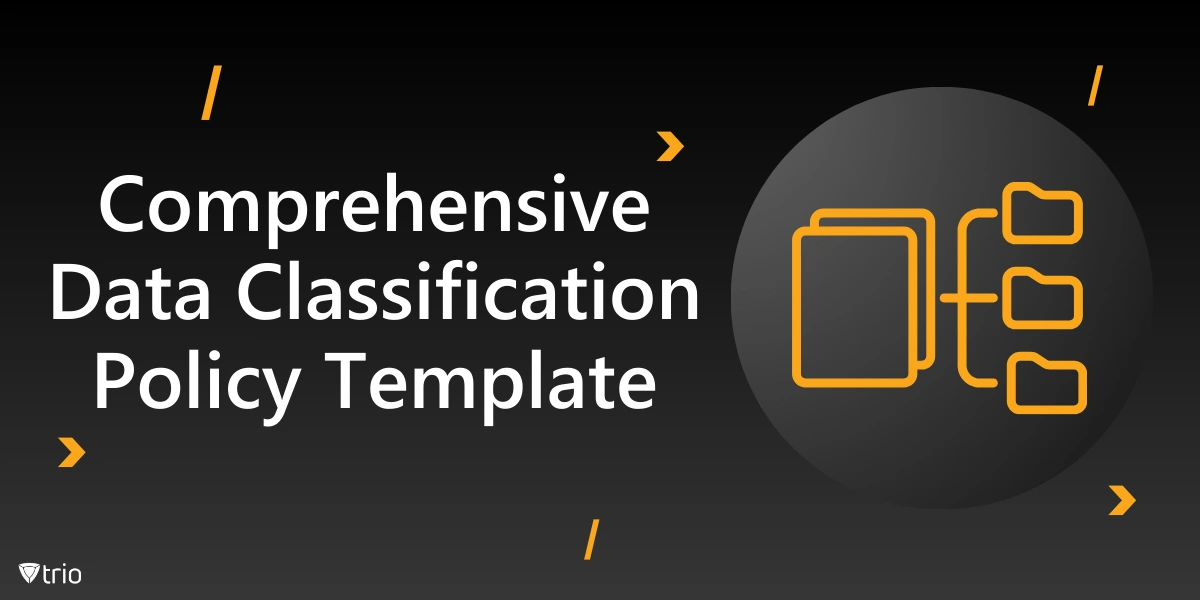Protecting sensitive information is one of the most important measures that organizations must consider. A robust Data Classification Policy Template serves as the foundation for effective information security management. This blog post will explore the essentials of an information classification policy, discuss various types of data classification, and highlight the importance of implementing a sensitive data classification policy in your organization.
Understanding Information Classification Policy
An information classification policy is a set of guidelines that categorizes data based on its sensitivity and criticality to an organization. This policy helps employees understand how to handle different types of information, ensuring that sensitive data receives appropriate protection while allowing for efficient use of less critical data.
Types of Data Classification
Data classification typically falls into several categories:
- Public: Information that can be freely shared without any adverse effects on the organization.
- Internal: Data intended for use within the organization but not necessarily confidential.
- Confidential: Sensitive information that, if disclosed, could harm the organization’s interests.
- Restricted: Highly sensitive data that requires the utmost protection and strict access controls.
The Importance of Sensitive Data Classification
Implementing a sensitive data classification policy is crucial for several reasons:
- Risk Management: By identifying and classifying sensitive data, organizations can allocate resources more effectively to protect their most valuable information assets.
- Regulatory Compliance: Many industries are subject to data protection regulations. A classification policy helps ensure compliance with these requirements.
- Data Loss Prevention: Proper classification enables the implementation of targeted data loss prevention measures.
- Informed Decision-Making: When data is classified, employees can make better decisions about how to handle and share information.
Download Our Free Data Classification Policy Template
To help organizations implement an effective data classification policy, we have created a comprehensive Data Classification Policy Template. This template is designed to be easily customizable to fit the unique needs of your organization.
Key Features of Our Template:
- Clear definitions of classification levels
- Guidelines for data handling at each level
- Procedures for labeling and marking classified information
- Access control and security measures
- Training and awareness recommendations
Enhancing Data Classification with Trio MDM Solution
While a well-crafted policy is essential, implementing and enforcing it across your organization can be challenging. This is where Trio Mobile Device Management (MDM) solution comes in.
Trio MDM offers powerful features to support your data classification efforts:
- Automated Classification: Trio can automatically classify data based on predefined rules, reducing the burden on employees.
- Access Control: Enforce access restrictions based on data classification levels across all managed devices.
- Data Loss Prevention: Implement controls to prevent unauthorized sharing or leakage of sensitive information.
- Remote Wipe: In case of device loss or theft, remotely erase classified data to prevent unauthorized access.
- Compliance Reporting: Generate reports to demonstrate adherence to your data classification policy and regulatory requirements.
By leveraging Trio MDM, IT managers can ensure that their organization’s data classification policy is not just a document, but a living, enforceable set of rules that protect sensitive information across all devices and user interactions.
Take the Next Step in Data Protection
Ready to elevate your organization’s data protection strategy? Start by downloading our free Data Classification Policy Template and customizing it to your needs. Then, experience how Trio MDM can transform your policy into action.
Protect your data, ensure compliance, and empower your employees with the right tools for secure information handling. With Trio MDM, you’re not just implementing a policy—you’re creating a culture of data security.
Conclusion
In an era where data breaches and cyber threats are increasingly common, implementing a robust data classification policy is no longer optional—it’s essential. By categorizing your information assets and establishing clear guidelines for their handling, you can significantly enhance your organization’s security posture, ensure regulatory compliance, and empower your employees to make informed decisions about data management.
Don’t wait for a data breach to highlight the gaps in your information security. Take proactive steps today: download our template, customize your policy, and explore how Trio MDM can help you implement and enforce it effectively. Your organization’s data security journey starts here—are you ready to take the first step?
Know about news
in your inbox
Our newsletter is the perfect way to stay informed about the latest updates,
features, and news related to our mobile device management software.
Subscribe today to stay in the know and get the most out of your mobile
devices with our MDM solution app.
Recent Posts

Erase the Risk: Protect with Zero Standing Privileges
Learn how zero standing privileges eliminate persistent access rights, enhance data security and reduce the risk of unauthorized access.

Understanding Access Control Types in Cybersecurity w/ Examples
Thorough understanding of access control types & the knowledge to make informed decisions about implementing security measures in your organization.

Cloud Data Protection: Safeguarding Information in the Cloud
Learn essential strategies for robust cloud data protection, exploring tools, best practices, and policies that safeguard sensitive information.





